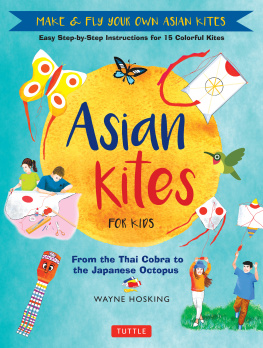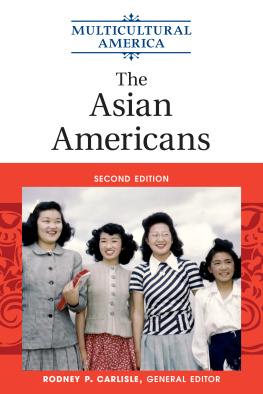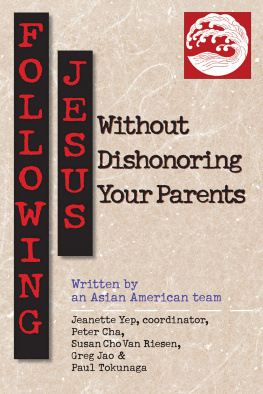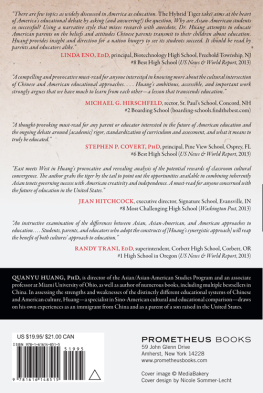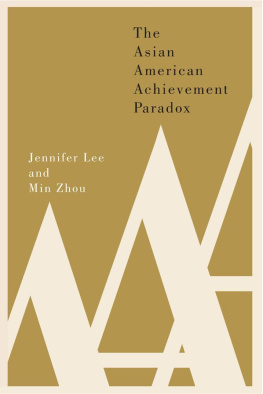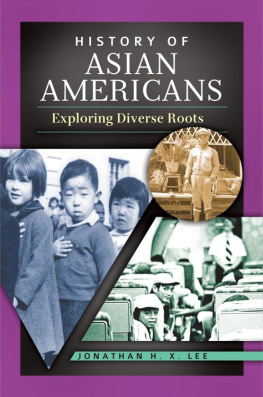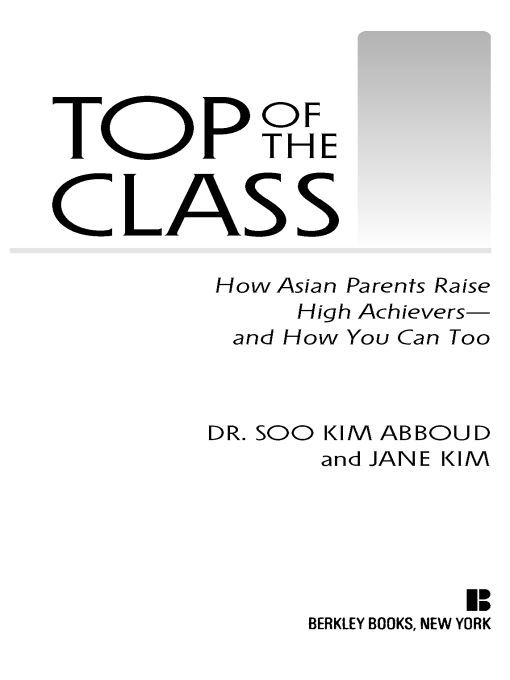Table of Contents
Most Berkley Books are available at special quantity discounts for bulk purchases for sales promotions, premiums, fund-raising, or educational use. Special books, or book excerpts, can also be created to fit specific needs.
For details, write: Special Markets, The Berkley Publishing Group, 375 Hudson Street, New York, New York 10014.
This book is dedicated to our parents,
Jae and Dae Kim. Thank you for everything.
Acknowledgments
Soo would like to thank her husband, Joe, whose passion for life and learning is unparalleled. Many years after leaving home, Soo still finds it hard to believe that she married someone whose love and commitment to lifelong learning even surpasses her parents and her own.
The authors would also like to collectively thank a few people. Thanks go out to our wonderful literary agent, Wendy Sherman, who championed this project from merely a concept to the book you are reading today. Many thanks to Denise Silvestro and Katie Day for their wonderful editorial advice and support. We would also like to thank all of our educators, our friends whose stories we revealed throughout our book, as well as the prominent Asian-Americans who took the time to contribute thoughtful quotes. This book would not have been possible without your help.
Foreword
Have you ever sat next to an Asian student in class and wondered how she managed to consistently get straight As while you struggled to maintain a B-minus average? Or wondered why the percentage of Asian students enrolled at the top colleges is disproportionately high? Asian students are considered amongst the best and the brightest in America. And although we hesitate to stereotype all Asian students, we cannot deny that, as a whole, they are doing something right.
If you dont believe us, just check out the following statistics. While Asian-Americans make up only 4% of the U.S. population, Asian-American students make up a much higher percentage of students in top universities around the country. Among Ivy League schools, the percentages are astounding: 23% at the University of Pennsylvania, 25% at Columbia and Cornell, 15% at Brown, and 18% at Harvard. Asian-Americans make up 24% of the student population at Stanford, 15% at Johns Hopkins, 17% at Northwestern, and a whopping 42% at the University of California at Berkeley (despite making up only 11% of the population in California).
In addition, 47% of Asian and Pacific Islanders over the age of twenty-five hold a Bachelors degree or higher, while the corresponding rate for all adults in this age group is much lower, 27%. Sixteen percent of Asians and Pacific Islanders over the age of twenty-five hold an advanced degree (i.e., masters, PhD, MD, or JD), in contrast to 9% for all other adults in this age group. A startling 15% of all U.S. physicians and surgeons are of Asian descent (statistics made available from the U.S. Census Bureau). And the buck doesnt stop there. After outperforming their colleagues in school, Asian-Americans also bring home higher incomes than their non-Asian counterparts; in 2002, the median income for Asian and Pacific Islanders was $52,018, almost $10,000 higher than the median household income for the rest of the population ($42,409).
So what do these numbers signify? Certainly Asian-Americans are no more intelligent than any other race or ethnic group. Contrary to what the public may believe, Asian students are no more intellectually gifted than non-Asian students. The reason that Asian students outperform their peers in the classroom has nothing to do with how they are born and everything to do with how they are raised. This book is for all parents and children who want to discover (or rediscover) a love for learning and develop the discipline to use this love to build knowledge and indispensable skills in the classroom and beyond.
You may be askingwho are we to write this book, and why are we writing it? Well, were happy to tell you. Soo is a board-certified surgeon and an assistant professor at the University of Pennsylvania; Jane is an attorney and immigration specialist at The Childrens Hospital of Philadelphia. We are first-generation Korean-Americansthat is to say, our parents, Jae and Dae Kim, were born in Korea but emigrated to the United States prior to having us.
Our parents came to America with their heads full of dreams of a better life but with little money in their pockets. Although they had stars in their eyes, their early life in America was far from glamorous. After moving into a small one-bedroom apartment on the University of Southern Californias campus (where our father was getting his masters degree in Computer Science), our mother went to work as a seamstress. She worked twelve- to fourteen-hour days for less than minimum wage with a dozen other immigrant women who were trying to help their husbands and families financially. Our father worked evenings as a janitor and as a gas-station attendant to make ends meet. He barely had time to study but somehow managed to obtain his degree after two years.
Soo was born two years after our parents came to America, Jane three years later. Our parents traveled from California to Toronto, Canada, and finally to Raleigh, North Carolina, as our father climbed the ranks of Nortel Networks (formerly Northern Telecom). Our mother stopped working outside the home after she had us and concentrated her efforts on educating her children. Our parents were never able to provide us with designer clothing or trips to the Caribbean, but we were never lacking for love or attention. Not once during our childhood did we ever doubt that our happiness, education, and future were our parents top priorities.
Soo was the typical smart, quiet Asian kid throughout grade school and high school. She got straight As and won math competitions instead of sports trophies. She attended math camp in the summer instead of partying at the beach with friends. Jane was a bit more social and outgoing. Nevertheless, her main goal in school was to get good grades rather than be seen wearing the latest fashion. Sound boring or even painful? Not at all. We are now successful career women who are fulfilled both professionally and personally. We have wonderful relationships with our parents (and each other!) and have only the fondest memories of our childhood.
Growing up, we noticed that many of our fellow Asian-Americans had similar experiences and views on education and professional development. Like ours, their parents had made education one of their childrens top priorities.
Needless to say, we are proud of what we and other Asian-Americans have accomplished. More importantly, however, we are convinced that ingredients specific to an Asian upbringing best prepare a child for success in the classroom and beyond. In this book, our hope is to share these secrets with you.
If you are wondering whether we were always at the top of our class, the answer is no. Soo struggled with advanced science courses and Jane experienced more than her fair share of mediocre grades throughout college and law school. But we made our way through and are now two financially secure professionals. Like many Asian immigrants, our parents came to Los Angeles with little money in their pockets and dreams of a better life. Thirty years later, we still smile when we hear our parents brag to friends and family, One doctor and one lawyer in the familywho could ask for anything more? Although this book will not guarantee that your child will be an exceptional student or college valedictorian, what it


